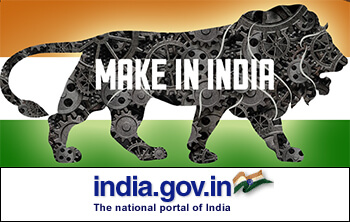Vision Strategy
Our Mission
Our Mission is to achieve excellence in the formulation and implementation of Customs and Excise initiatives aimed at:-
Realizing the revenues in a fair, equitable and efficient manner.
Administering the Government's economic, tariff and trade policies with a practical and pragmatic approach.
Facilitating trade and industry by streamlining and simplifying Customs and Excise processes and helping Indian business to enhance its competitiveness.
Creating a climate for voluntary compliance by providing guidance and building mutual trust.
Combating revenue evasion, commercial frauds and social menace in an effective manner.
Our Commitment
We shall carry out our tasks with:-
integrity and judiciousness.
courtesy and understanding.
objectivity and transparency.
promptness and efficiency We shall encourage and assist voluntary tax compliance by our clients.
Our Strategy
To achieve our mission, we would focus on:-
Enhancing the use of Information Technology
Streamlining Customs and Excise procedures
Encouraging voluntary compliance
Evolving cooperative initiatives
Assisting in the formulation of Tariff Policies
Combating revenue evasion, commercial frauds and social menace effectively
Measuring conformance to service delivery standards � Developing professionalism and responsibility
ENHANCING THE USE OF INFORMATION TECHNOLOGY
1. The use of information technology has brought about a revolution in the manner in which business operations are carried out throughout the world. More and more operations are being carried out 'on-line', reducing the time taken and taking the world towards ' paperless' operations. Thus, use of 'Electronic Data Interchange' (EDI) has been accepted widely as the means of interface between business partners and Government agencies
2. Indian Customs is also committed to adopt this new deal so as to attain global standards in speeding up flow of goods, thereby reducing the turn-around and inventory carrying costs, imparting vital competitive edge to the Indian trade and industry.
3. Building on the success of the pilot EDI project at Delhi Air Cargo, we would seek to promote electronic commerce and facilitate expeditious clearance of cargo through the following measures :-
(i) Automated processing of import and export entries and cargo declarations, with least paper work and human intervention, at the sea ports, airports, inland container depots, container freight stations and land border station.
(ii) Enabling EDI with businesses, shipping lines, airlines, carriers, customs agents, custodians and other agencies concerned with cargo clearance and international trade.
(iii) Providing access to customs electronic infrastructure to enable business partners to obtain information required by them for making compliance.
(iv) Computerisation of all the other customs operations and management activities to provide better service to our clients and enhance our performance.
4. Similarly, we envisage the following measures for enhancing the use of information technology in our excise operations :-
(i) Receipt and processing of excise assessment returns electronically, through EDI, Internet and other means.
(ii) Enabling the assessees to maintain computerised records, issue of computer generated invoices and file returns electronically.
(iii) Having an automated 'returns' processing system to assist assessment and audit functions.
(iv) Building a Management Information System to assist policy making, monitoring of revenue trends and combating duty evasion by developing assessee profiles.
STREAMLINING CUSTOMS AND EXCISE PROCEDURES
1. Customs and Central Excise procedures are perceived by the trade as cumbersome involving time consuming documentation, scrutiny and physical examination of goods, divergent practices and a high degree of individual discretion, resulting in impediments to the smooth movement of trade and acting against the interests of genuine importers, exporters and manufacturers. Appreciating this concern we are committed to streamlining and simplifying the procedures and setting a climate for voluntary compliance. The introduction of electronic processing of documents also entails a change in approach and re-engineering of Customs and Central Excise processes based on selectivity, risk assessment and reduced intervention.
2. We envisage the following measures to achieve this objective :-
(i) Minimise pre-clearance scrutiny of import/export declarations and examination of goods.
(ii) Introduce systems assessment i.e. without any human intervention for specified commodities / identified importers and exporters.
(iii) Introduce audit based post-clearance scrutiny for identified importers / exporters, industry groups. Combine post-clearance audit for Customs and Central Excise in respect of manufacturer-importers / exporters wherever possible.
(iv) Accept periodic declarations instead of individual declarations for each consignment for identified importers / exporters.
(v) Introduce a system of deferred duty payment for identified assesses subject to revenue safeguards.
(vi) Minimise physical examination of goods by effectively using 'risk assessment' based targeting techniques.
(vii) Introduce a system of release of goods even where the documentation is incomplete or there has been contravention of Customs laws, subject to adequate safeguards.
(viii) Eliminate divergent practices in the application of Customs laws and procedures at different Customs stations by effective monitoring and analysis of the computerised database.
(ix) Move towards a single window clearance wherever possible.
(x) Provide 24 hours or 'extended time' Customs clearance facility, wherever required.
(xi) Implement the provisions of International Conventions on Customs techniques (Revised Kyoto Convention).
(xii) Examine all extant procedures and eliminate those not compatible with trade facilitation.
(xiii) Undertake a continual review of Customs procedures so as to be responsive to changing situations.

